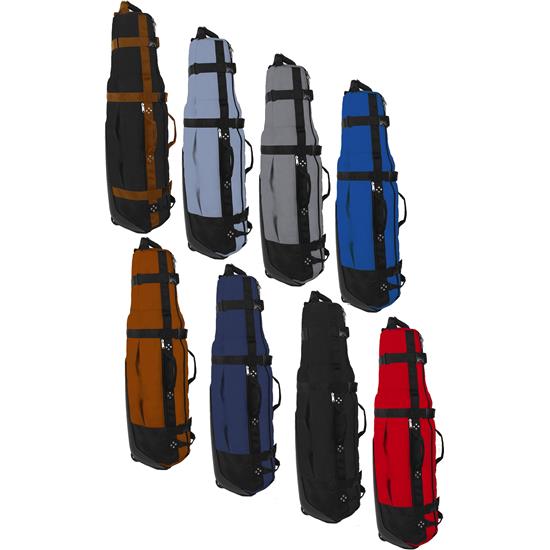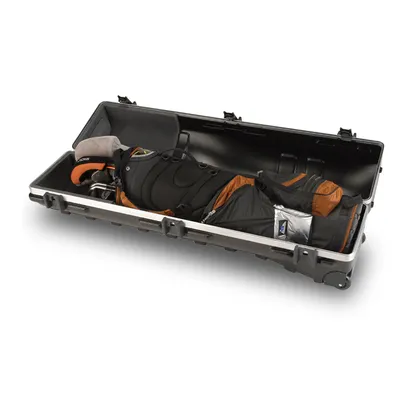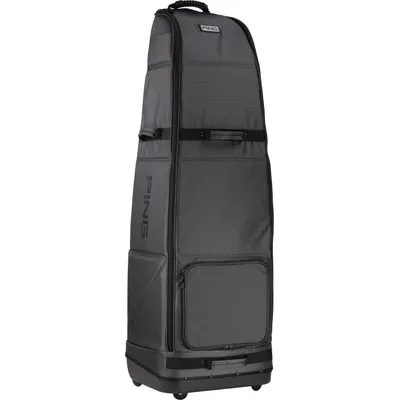What type of golf travel bag is right for me?
Golf Travel Bags: Hard Shell vs. Soft Shell
When a golfer travels with clubs, there are two things of paramount importance: first, the athlete needs to assure that their tools are safe and secure; and secondly, the clubs need to actually arrive at the final destination.
Let’s see how we can accomplish both without too much stress.
Hard Shell vs. Soft Shell Golf Travel Bags
Hard Cases – Clearly, a massive, hard-plastic “coffin” will protect your clubs the best, but they’re notoriously inconvenient.
In fact, you almost have to devise an entirely separate itinerary for your plastic travel companion.
With no new engineering developments being targeted towards these options compared to the more practical, softer alternatives, we recommend foregoing archaic hard cases.
Soft-shell Bags – Leading golf bag manufacturers like Sun Mountain, Callaway and Club Glove continue to release technological advances that make soft shell bags nearly as durable as the above.
Often equipped with thoroughly-tested padding designs and wheels for easy maneuvering, they are further enhanced with straps, pockets for shoes and more.
Make sure to check out our full assortment of travel golf bags to find the design that fits your specific needs.
To further improve club protection, there are a few additional steps you can take.
For example, it’s easy to stuff golf towels around the heads of the clubs for an added layer of cushioned support and to limit movement.
Similarly, you can purchase a slender four-foot piece of wood, a large dowel or 2×2, that is longer than your driver (if you have a 48-inch driver you will need a slightly longer piece of wood) and stick it in your golf bag.
If your clubs are dumped on their heads, the stick of wood will absorb most, if not all, of the shock.
Transportation
While you can find great bags to protect your items, getting them to the final destination is another matter altogether.
Here we’ll go through some common practices that golfers who travel frequently employ to help ensure their clubs make it to the same baggage carousel as they do.
- Use three luggage tags so if the first two fall off, the clubs will still identify as yours; this may seem like overkill, but it could seriously help.
- Take digital photographs of your set just in case a claim has to be filed with the airline. Similarly, check your travel insurance to see if a rider for clubs is available.
- Moreover, keep receipts for everything that goes into your golf bag. With the proper evidence, most airlines will reimburse you for these expenses.
Nowadays, your best strategy for traveling with your golf clubs is to send them separately.
Where it was once prohibitively expensive to ship your golf clubs ahead of time, today the charge is much cheaper.
Just as you are able to purchase a new driver online on Wednesday and have it for your Saturday tee time, the same speed exists in shipping the clubs to your destination.
For example, companies like Ship Sticks offer hassle-free pick-up and delivery service to any golf course or hotel.
As an added bonus, all clubs are shipped in a hard case or sturdy box for unrivaled en route protection.
Additionally, if you head to their website you can get an instant price quote.
In some cases, you could pay $39 less than the cost of checked baggage.
Even if shipping clubs separately does not save you as much cash as you would like, it does save you travel fees, waiting times and, more importantly, worries.
Bag Recommendations
Now that you know what you need to do, here are a few examples of some quality golf travel bags:






